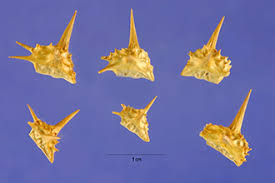Saturday, April 18, 2015
Our decision before leaving Flanner's Beach was, by land or by
sea? There are two ferries and two bridges to cross over to the
barrier islands of Cape Hatteras. Two years ago we left Ocracoke
Island on the Cedar Point ferry, and twice traveled across the
northernmost bridge. Greg was concerned about our low hanging tow
assembly and scraping as we got on the ferry, so we elected to take a
new land route.
We drove north from Flanner's Beach to New Bern, crossed the Neuse
River, and drove north and then east along the peninsula that
stretches into Pamlico Sound and to Roanoke Island. That route took
us through marshy wildlife refuges, and we stopped for lunch within
the Alligator River National Wildlife Refuge. We found a pull-off
just before a small bridge and had the area to ourselves.
.jpg) |
| Lunch stop in the Alligator River National Wildlife Refuge |
.jpg) |
| No Gators visible even though their range extends this far north |
We drove the long bridge across the sound over to Roanoke Island
then the next bridge brought us to Nags Head. The national seashore
is just south of there, where the development ends and the park
begins. We drove the length of Bodie Island until we reached Oregon
Inlet campground, just before the bridge to Hatteras Island, the Pea
Island National Wildlife Refuge, and Rodanthe. The private park we
stayed in the last two years is south of there in Waves. A nice park,
but pricey to stay in. Our timing was good. We arrived on Friday
afternoon, the first day for Oregon Inlet to open after the winter.
We found a nice site with the dunes between us and the beach.
.jpg) |
| Campsite in the dunes of the Hatteras National Seashore |
.jpg) |
| View of Bodie Lighthouse from the dune behind our campsite |
.jpg) |
| Looking back at the campground from the dunes |
No hook-ups here, a dump and potable water are across the main
highway at the marina. There are cold showers here. When we get
desperate we'll shower in the rig and take advantage of our hot water
heater! We decided to stay nine nights since it costs us $10 a night
with my senior pass. There is virtually no boondocking in the East,
so we are taking advantage of the cheapest site we can find. But, $10
a night? Can't beat that to be on the backside of the dunes. We've
got everything we need in the rig.
After parking and leveling we walked over the dunes to the beach.
Not many people around and a lovely beach to walk. The brown pelicans
have been flying overhead, there are ducks migrating, (although they
appeared to be flying south), and other shorebirds scurrying in the
waves. Arriving back at the rig we discovered the ground is littered
with goatheads, those round thorns that we have encountered all over
the country. They are invasives from the Middle East. We first
encountered them in a campground in Marfa, Texas. They stick to your
shoe soles, get transported inside and latch into the rugs. Since I
am usually barefoot inside, I've got to find them all and rid our
home of them! Picking them out of the rugs results in pricked fingers
as well. So all shoes are staying outside after being carefully
de-goatheaded.
.jpg) |
| Looking south along the beach |
.jpg) |
| 4-Wheel drive vehicles are permitted on National Seashore beaches |
.jpg) |
| Big surf from the steady east wind |
.jpg) |
| Various sandpiperish shorebirds |
We have the same neighbors we had at Flanner's Beach. Today we
noticed that they were walking their dog with duct tape on its feet
to protect it from goatheads. Later they returned from shopping and
the dog is sporting some sort of red booties. The campground is
filling up with campers eager to enjoy the good weather on the first
open weekend. Things should quiet down Sunday afternoon. We have a
couple days of rain coming up and the temps should drop from the 70's
into the 60's, but the sun will come out again, unless the forecast
changes. You never know in the South in April. In the meantime, we
have a nice long visit to enjoy the sounds of the surf and relax.
 |
| Goathead photo from USDA |
.jpg)
.jpg)
.jpg)
.jpg)
.jpg)
.jpg)
.jpg)
.jpg)
.jpg)
.jpg)
.jpg)
.jpg)
.jpg)
.jpg)
.jpg)
.jpg)
No comments:
Post a Comment
Your comments encourage me to keep posting!